Staying with the trouble
Percy Grainger walked to avoid self-flagellation. David Sedaris walked to placate his Fitbit. Virginia Woolf walked the streets of London, and later the South Downs, endlessly: because she loved it, because she was walking her dogs, because she needed to think clearly. For Henry Thoreau, every walk was a sort of ‘crusade’. Sarah Marquis, who walked 16,000 kilometres over three years, sought a return to an essential self. ‘You become what nature needs you to be: this wild thing.’1 Will Self began walking after he gave up heroin, though in his novel Walking to Hollywood (2010) the protagonist walks not to escape addiction but because he fears he has Alzheimer’s. This feels familiar. My brother jokes about starting a group called Running Away from Dementia. Sometimes, catching sight of my reflected posture on a walk, I wonder if I am doing the same thing, walking away from fate. If so, could one ever walk fast enough?
Last October, some friends and I chose to walk the extent of Broadway. We started at a point that was once a village called Marble Hill and sat on the tip of Manhattan. At the end of the nineteenth century, a shipping canal was tucked in behind its southern edge, rendering the tiny town an island in the Harlem River. Nine years later, with a flourish of landfill, it was attached again, this time to the northern mainland – a vestige of Manhattan amid the Bronx. Small facts like this delight me.
I don’t know who built the Broadway Bridge, which links Marble Hill to its old stomping ground, but Native Americans worked on many of the bridges and skyscrapers of New York: ‘sky walkers’ they were called. Our walking was more prosaic: eight Australians, one of them male; all bookish types. We met under the bridge before heading over it, southward to Inwood. It is green up there, and the large park that sits between the Hudson and Broadway rises steeply from the street. Among its tall trees are remnants of Manhattan’s original forests; in its swamps the original salt marshes. The bald eagle, a species that has clawed its way back from being ‘endangered’ to ‘threatened’, has been re-released into the park after more than a hundred years of absence.
 Sophie Cunningham in New York (photograph by Virginia Murdoch)
Sophie Cunningham in New York (photograph by Virginia Murdoch)
I had only been to Inwood once before, one hot Sunday afternoon. Music blared from cars and shops; we ate shaved ice while standing on street corners. This day was colder, quieter. It was fall, sunny, ten degrees. The weather here turns on a dime, was already moving, swiftly, towards a new season. By the time we reached Battery Point eight hours later, it would feel like winter. We had much ground to cover, so we moved quickly, passing the incongruous Dyckman Farm House without much more than a glance. Built in 1794, it sat small, low, out of time, surrounded by a cottage garden, looking across to a gas station and a gymnasium.
‘I wonder if I am doing the same thing, walking away from fate’
Walking is often a solitary activity, but on this day it was gloriously social. Conversation ebbed and flowed as the eight of us moved between one another and talked. It was like a slow, elaborate dance. Judy and I discussed our feet at some length. Do they wear out with age? It was a question that had been on my mind as both the necessity and pleasure of walking New York’s streets had taken its toll. Around Washington Heights, Francesca and I talked about parents. She had lost one of hers to dementia as I was losing one of mine. We discussed what it was like to witness such unravelling, and wondered what it was like to experience it. As if to answer our question, leaves flew around in the wind. There was a scattering, a loss of coherence.
The sun moved up, then overhead, to the west. By the time we walked through Times Square, it had disappeared behind the skyscrapers. Deep in the canyons of the city, the wind whipped up the avenue. We moved past lumbering humans dressed as Muppets and superheroes. By now we were in single file; talking had ceased. Walt Whitman’s description of Broadway as ‘unspeakable’ suddenly felt apt.
‘Walt Whitman’s description of Broadway as ‘‘unspeakable’’ suddenly felt apt’
Ten or so blocks later, Virginia took a photograph of us crossing the road to Madison Square Gardens, Francesca striding out in front, Persephone-like. We rested in the park. Squirrels scampered over us, looking for food. Donica fed them nuts. The squirrels’ audacity revived us temporarily, but by SoHo we were cold and tired again. Lucy, tiny and compact, looked as if she might simply keel over. My feet throbbed in their boots. The pavement made everything harder, more jarring. People crowded the streets in a buzz about the beauty of the streetscape, excited by the weight of their huge shopping bags. We were by now immune to such pleasures, driven to get this insane venture over and done with. It was around six pm, near the Wall Street Bull, when we arrived at Number One. We could see the water and, yes, the Statue of Liberty. We had walked close to thirty kilometres. ‘Didn’t you say it was twenty-one?’ someone asked me. We cheered, took photos for Instagram, then headed towards a pub on Stone Street, one of the first roads to be paved in Manhattan.
 (photograph by Virginia Murdoch)Two days after our walk along Broadway, my yoga teacher decided that the time had come to discuss the articulation of the feet: specifically, drawing up from the arches to activate your legs, mobilise your core. ‘You see,’ she said, ‘you do this.’ She moved her foot almost imperceptibly, just enough that I could see tiny muscles ripple as she planted it firmly on the ground before stretching herself. She stood taller, lighter – not quite in the league of Menuhin conducting Beethoven’s fifth with his feet while standing on his head, but still impressive.
(photograph by Virginia Murdoch)Two days after our walk along Broadway, my yoga teacher decided that the time had come to discuss the articulation of the feet: specifically, drawing up from the arches to activate your legs, mobilise your core. ‘You see,’ she said, ‘you do this.’ She moved her foot almost imperceptibly, just enough that I could see tiny muscles ripple as she planted it firmly on the ground before stretching herself. She stood taller, lighter – not quite in the league of Menuhin conducting Beethoven’s fifth with his feet while standing on his head, but still impressive.
‘As a literary structure, the recounted walk encourages digression and association ...’ Rebecca Solnit writes in Wanderlust: A History of Walking.2 It is true that one of the common uses of walking is to permit a writer a meandering narrative. But should digressions be allowed when walking? On an even colder walk a few weeks later, the question as to whether these were permissible became a topic of conversation. Sure, an obscure pizza place on Avenue J which makes THE BEST PIZZA IN NEW YORK might only be a few blocks off Flatbush, but if we had dedicated ourselves to a day of coming to know Flatbush Avenue, could we seek experiences outside it? ‘The blogs I have read,’ I said authoritatively, ‘say that if you plan to walk the full extent of an avenue you should not step off the path. That is not in the spirit of the walk.’ The day already promised a carousel in Prospect Park, Caribbean Curry, old-style diners, theatres, and the high school where both Barbra Streisand and Neil Diamond were educated. What more could we ask?
I am not a consistent person and my rule, within seconds of being announced, was challenged by happenstance. As we walked towards the Flatlands Reformed Church – built on the site of a Native American village in 1654 and therefore a goal of sorts – I realised it was off Flatbush. I hesitated momentarily before turning left onto Alton Place. It was worth it. A plaque in the church gardens told us lots of things, including the fact that George Washington had ridden this road in April 1790. On the same plaque there was a reference to Indian Braves, but not to the village that had once been there. A woman offered to show us around the church, which was white, simple, wooden, plain. Once inside I looked up at the ordinary painted roof that had no adornment of any kind, then to the balcony at the back of the church. ‘That’s where the slaves sat,’ the woman, who herself was African American, told us.
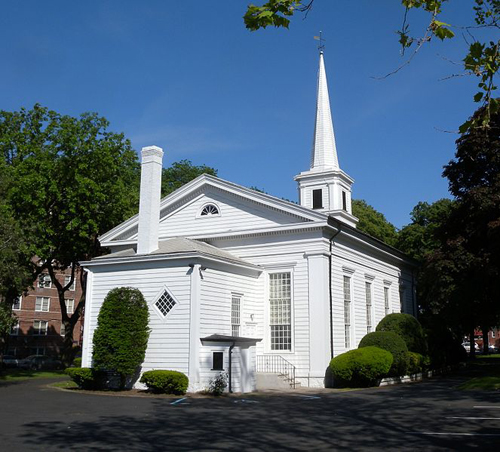 Flatlands Reformed Church (photograph by Jim Henderson)
Flatlands Reformed Church (photograph by Jim Henderson)
We retraced our steps and turned left onto Flatbush. To our disappointment, it was not long before the avenue was eight lanes wide and lined by shopping malls. All charm vanished. It was tempting to give up, especially as no one seemed to know where the original Flatbush began or ended. But we chose not to be churlish and kept on going. Suddenly, to our left, was a coastal channel lined with houses, their balconies hanging low over the water. Mills Basin. It was only three pm, but the light was pearly-grey, moving towards the pink of sunset. Sea birds circled in large numbers. We walked a bit further and saw a pier jutting out into the water, lined with petrol pumps. Virginia stood for a moment then said, ‘This looks like Metung.’ She was right, but it felt strange to feel echoes of the Gippsland Lakes, here in the most populated borough of New York. That has been one of the wonders of Brooklyn. There is so much nature here, albeit nature that is struggling to hold its own.
Three months after first arriving in Brooklyn, I had the chance to acquaint myself with its wilder side. When I stepped out of a car at Plumb Beach, I felt such a rush of surprise and relief that tears sprang to my eyes. The sea. Open sky. A narrow stretch of sand. Though windy and grey, it wasn’t cold. There were wind surfers, and in the distance, factories. Feral cats prowled the low-lying dunes.
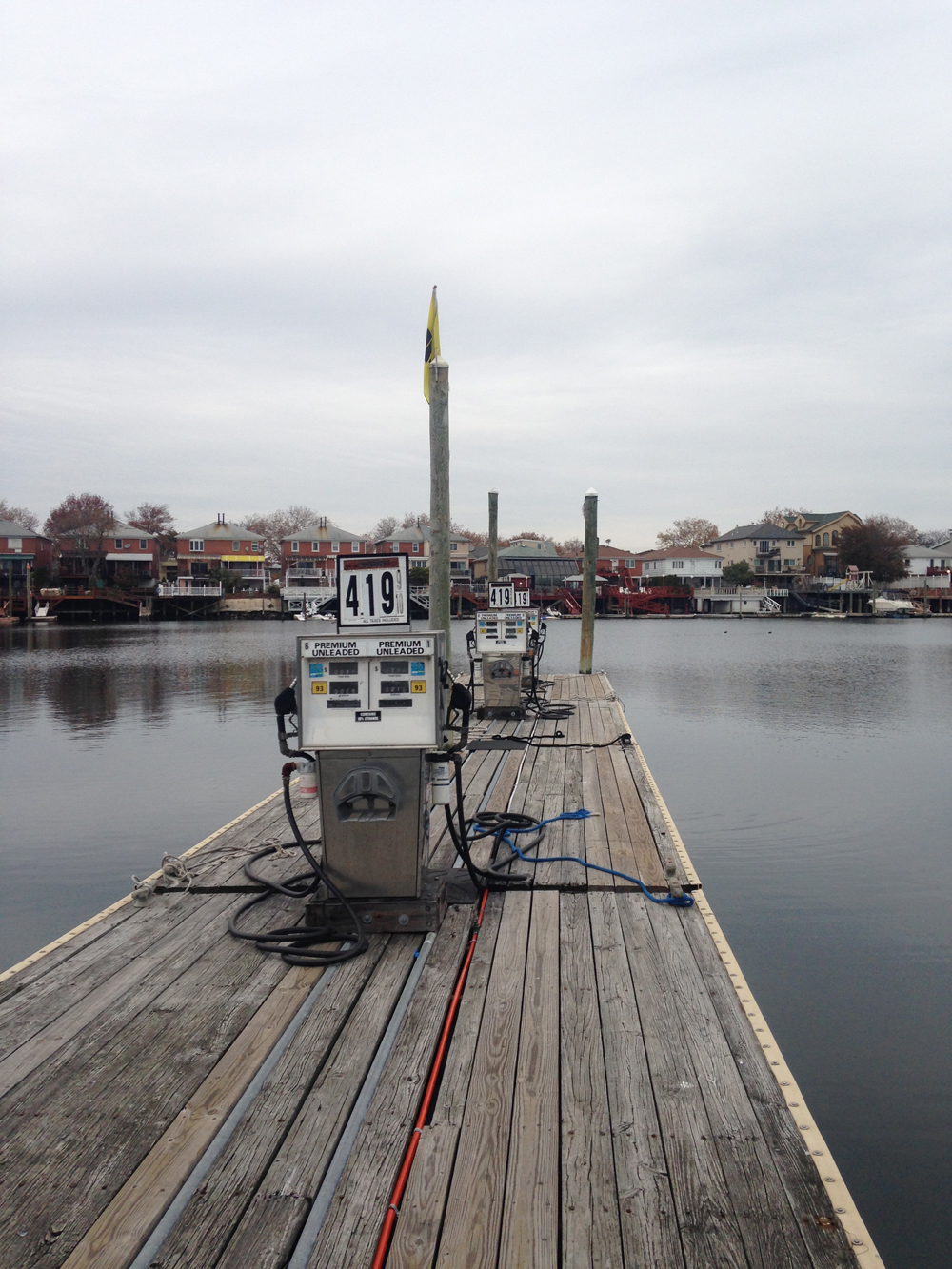 (photograph by Sophie Cunningham)
(photograph by Sophie Cunningham)
I had signed up as a volunteer to count mating pairs of Horseshoe Crabs. Our business was to keep track of their numbers so that they could officially be listed as endangered, a status that might afford them some legal protection. The crabs used to thrive on the shores, but today the numbers are modest. An immodest quantity – 500,000 or so – are hung up each year in labs, and partially drained of their blood. Their blood enables the identification of bacteria in particular pharmaceutical products, and the pale-blue liquid sells for $15,000 a quart. After being bled they are returned to the ocean, where many of them ‘fail to thrive’. Instead they drift around, half alive, unable to breed. Before pharmaceutical companies discovered them, they used to be harvested by the million for fertiliser. Despite these modern pressures, they look much as they did half a billion years ago – prehistoric.
Before hanging out with the crabs, I did my homework. I found out that they lived for decades; that they had nine eyes scattered about (on their shell, beside their mouth); and the Nobel Prize in Medicine was awarded in 1967 in part for research performed on the Horseshoe Crab eye. I knew the females were startlingly large – as much as sixty centimetres in length. No photo could prepare me for the awesomeness, in the old-fashioned sense of the word, of these creatures. They look like dark-brown, thickset, barnacled dinner plates circa 1970. I fell in love with them immediately. I picked one up, using two hands and grasping either side of its large shell. It flailed at me all the while, using its claws and legs like spears. I got the message and put it down.
When they are mating, the males attach themselves to the females with their ‘claspers’, which are small claws, and then ride out the waves so they can get to smooth sand. If they make it to the shoreline, they secure themselves by digging into the sand before getting down to business. Often a female crab will have several male crabs attached to her. We picked them up in pairs and brought them in to measure and tag. When we did so, the male would hover close to the female, though one lone guy wandered off in the other direction, leading to gags about a lack of chemistry. The tagging meant drilling a small hole in the corner of their shells and sometimes the pale-blue blood that makes them so valuable spurted out, translucent. I would plug the hole up quickly with a plastic tag, worried that I had hurt them. I don’t make any claim to know if the crabs feel pain, or think what we’d call thoughts. As they rode out the waves of a beach off Brooklyn, were they oblivious to the industrial city pressing down upon them? Did they notice that the tide was high? That the water temperature was eighteen degrees (we measured it) and the air outside a bit less? Or that a full moon was rising? They must have had some instinct for all this, for it was the sea temperature, the tide, and the moon that were bringing them together.
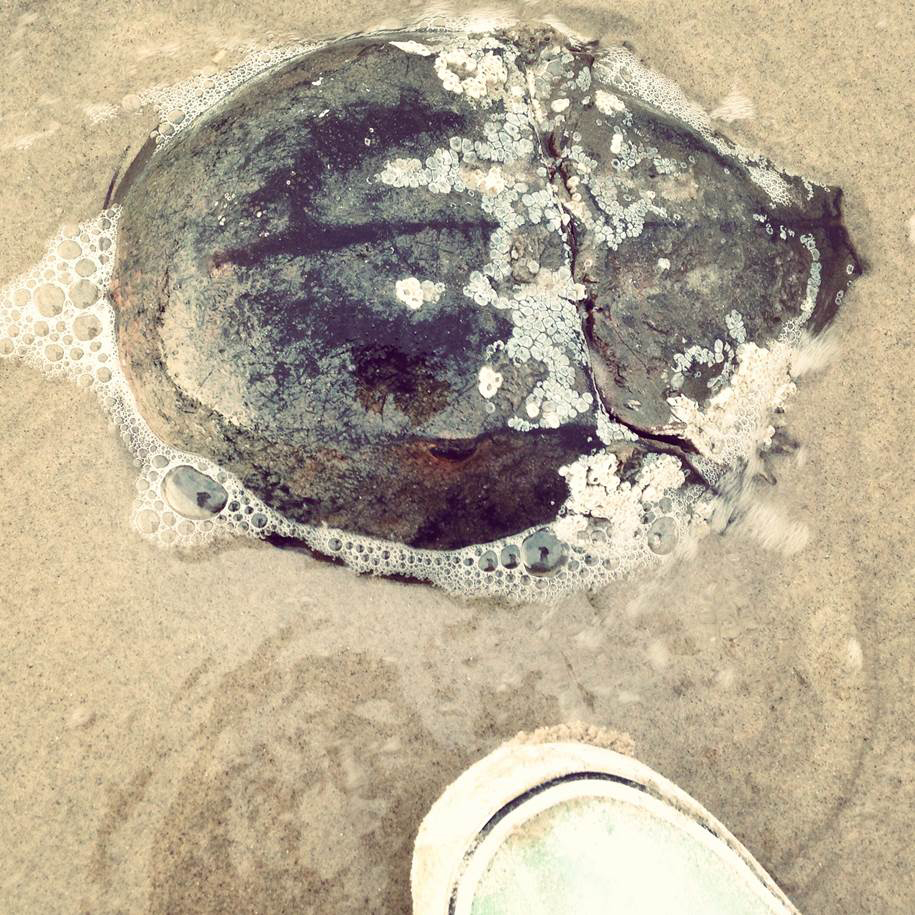 Horseshoe Crab (photograph by Sophie Cunningham)
Horseshoe Crab (photograph by Sophie Cunningham)
When I spoke of my concerns about the fate of the Horseshoe Crab at a writers’ festival recently, Antony Loewenstein, an activist and writer whom I knew and admired, asked me to explain my interest. He wasn’t trying to be rude, he said; he just found my concern so random. And he’s right, it is. We are in the midst of the sixth extinction, living, as political scientist Audra Mitchell puts it, through ‘an unmaking of being’.3 Fifty-two per cent of our biodiversity was destroyed between 1970 and 2010. Why focus on these barnacled dinner plates?
‘Fifty-two per cent of our biodiversity was destroyed between 1970 and 2010. Why focus on these barnacled dinner plates?’
Random. The word interests me. As I get older, I no longer try to find meaning in order so much as draw meaning from randomness. I feel this strongly: things are both random and connected, all the time. Leonard Woolf used to say ‘nothing matters’ by which he meant ‘everything matters’. All of it. The lot.
Not long after Antony’s question, a friend, Helen, emailed me to tell me that her grandson had asked her to suggest something ‘random’ he could draw. Helen had said to him, ‘I’ve just read a book about Cyclone Tracy. A lady said she looked out and saw dogs sailing through the air with their chains still on.’ ‘Yes, that is random,’ her grandson agreed, before producing a drawing of doubled-over palm trees, with chickens and dogs flying through the air.
So we talked about this word, Helen and I. She had found a description of it as ‘the latest buzzword used amongst mindless teenagers as a way of showing just how utterly irreverent their predictable sense of humour is’. That seemed harsh. To us the word’s usage meant something closer to ‘weird and not particularly logical’. Helen asked her grandson what he meant by the word. The eight-year-old gave the question some thought before saying, ‘It’s hard to give a definition of a word without using the word itself.’
I feel increasingly compelled to walk to random places, to know them through the soles of my feet. On the last day of fall, we walked Brooklyn’s longest avenue: Bedford. It took us from the serenity of circling white swans at Sheepshead Bay, past kilometres of family homes and dog-walking locals, Brooklyn College, and multiple high schools. In the morning, the sun was shining, but by the afternoon the day took on a greyer cast. We walked through what was once known as Automotive Row and past the now abandoned Studebaker showroom. We walked through Crown Heights and Bed-Stuy. We walked into South Williamsburg, home to many of New York’s Hasidic Jews. We did not feel welcome there and walked purposely, swiftly, to indicate we did not mean to offend. It was a shock to arrive at the divide between South Williamsburg and the north, a border so clear it was if we had arrived in another country, with bikes and bike lanes, bars and street art. Of all the walks we did this was the one where gentrification, undergone or resisted, was most apparent. Brooklyn has become one of the least affordable places to live in America.
It would be nice to make some theoretical claim here (many have) that meandering walks represent the creative process. But you could walk forever and not end up with words on a page. That doesn’t seem so terrible to me. I listen to politicians engage in rhetoric, semantics, and blatant lies. I attempt to use language to describe various concerns, and fall into apocalyptic cliché. My Dad, sitting in a home losing words by the day, is yet another reminder of the ways in which language can fail us. It is images I turn to now: a hundred-year-old photo of a man standing atop a pile of bison corpses; Pacific Islanders trying to sweep the rising sea from their homes; the Adelaide Hills on fire.
‘As I get older, I no longer try to find meaning in order so much as draw meaning from randomness’
Not long ago, an article from the Washington Post described American psychologist Martin Seligman’s experiments of 1967. ‘He put a dog into a box with two chambers divided by a barrier that could be jumped over. When one chamber became electrified, the dog ran around frantically, finally scrambling over the barrier to escape the shock. In later trials, evading the shock becomes easier and easier for the animal until it would just stand next to the barrier waiting to jump. But the outcome is much more grim if a dog first learns that electric shocks are uncontrollable and unavoidable. If animals were repeatedly shocked while tied up beforehand, then later placed in the same box free to roam, most didn’t jump the barrier. Instead, they lay down while whining and taking the jolt. Subsequent trials showcased the animal’s same passive, defeatist response.’4 These experiments seem horrendous to me, and the lesson obvious: helplessness can be learned. The findings, when published, went onto inform CIA interrogation techniques.
So: walking. We walk to get to one place from another, but in doing so we insist that what lies between our point of departure and our destination is important. We create connection. We pay attention to detail, and these details plant us firmly in the day, in the present. They bond us to place, to people. Walking opens our hearts. Thoughts stop swirling in tight circles. They loosen up. Meander. Slow down.
My walks are usually contained and urban, but that is not always the case, and more physically challenging treks take on a different cast. The undertow of history exerts its subtle force on city walks but is more constant in older landscapes. The second day of the Inca Trail in Peru took us over two passes 4,000 metres high, a series of extreme ascents and descents. The first was called Dead Woman’s Pass: something to do with the silhouettes the mountains form, though it felt more ominous than that. When I got to an Incan ruin after about nine hours of this and saw there was another hour to go before we reached our camp, I cried and swore. (‘I loved it when you said “Fuck this for a joke”,’ an Irishwoman in our group enthused.) The pain quickly receded, and what I remember now are vertical gardens hanging from sheer cliffs, cloud forests, humming birds so tiny that at first I thought they were colourful bumblebees, orchids growing between the cracks of stones in abandoned ruins, and terraces, breathtaking in their scale, stepping their way down the Andes.
At first, ruins seem picturesque, but the more of them you walk over the more the specific details grab you: you find yourself wondering how massive granite boulders were carved so particularly. We asked, and were told that cold water was poured into natural fissures when the boulders were hot from sitting in the sun. This would cause the cracks to widen so that wedges could be inserted, and over time the rocks would split. How long would it take to build a city in this fashion?
While I walked leadenly through the rain, porters sprinted past me. I imagined the young messengers who ran relays across what are now several countries, barefoot. I asked our guide if the Incas had a written language. He became frustrated as he answered me, because the ways in which his ancestors communicated were not recognised as language. He told me that messengers carried ‘talking knots’, or string arranged like a necklace with knotted strands that look – to a modern eye – like macramé. The knots don’t relate directly to spoken words, but the Spanish were quick to ban them on the grounds they could not interpret them. The Incas could, in effect, talk about them behind their backs.
Then there was Machu Picchu. I had been so focused on the journey, on simply breathing at high altitude, that the destination quite took my breath away. As I stood at the Sun Gate and looked down upon it, a dozen stories came to life: tales of lost cities, Tintin’s Prisoners of the Sun (1949) brought to life. Grey stone buildings and terraces sat against vivid green jungle in the clefts of several mountains. The precision of the layout reflected sophisticated agricultural and irrigation systems, nuanced astrological understandings. Houses were a mix of the humble and the grand, alongside temples dedicated to the sun, the moon, and the condor. It was a shock to realise that, despite such impeccable planning, the city was inhabited for only a century before emptying out. This was not because the remote Machu Picchu was discovered, nor because it was attacked. It was smallpox – introduced by the Spanish – which destroyed much of the population. The end, when it came, was swift.
On our last day in Peru, we walked around Saqsaywaman, a ruined settlement above Cusco. The remaining boulders had proved too heavy for colonists to use for other purposes. Monumental, they formed the base of walls that jutted this way and that for hundreds of metres. Some said the zigzag represented lightning bolts, others that the walls were stylised puma’s teeth. I walked across a plain to the hill opposite to decide for myself. As I stood there, I tried not to think of the Andean condors we saw at an animal rescue centre earlier that day, nor the de-clawed pumas. Both Peruvian national symbols, they are now endangered. The walls, I decided, were lightning bolts, but it was hard to get a proper perspective.
 Saqsaywaman (photograph by Lalo Campos, via Wikimedia Commons)
Saqsaywaman (photograph by Lalo Campos, via Wikimedia Commons)
As you move through history, history moves into you, more surely than if you read it. Writers mark the page, but walkers mark the earth, and the earth in turn marks us. In Incan constellations, animals are found in the negative space, the black between the stars. When the Incas first saw the Spanish, they believed they were part-human and part-animal because they arrived on horseback; man and horse were considered one creature. I carry these ideas with me: that there is meaning in the space between, that we and the creatures that carry us are one.
The writer Ray Bradbury lived in Los Angeles and walked its streets for sixty-eight years without driving a car, fantastically obstinate in a city that is a monument to the oil industry. But Los Angeles is not alone in its abandonment of human scale. It is New York that is the odd city out, New York that has invited people to walk its streets for hundreds of years. Anthony Trollope, Charles Dickens, Walt Whitman, and Herman Melville not only walked New York’s streets, they also wrote about them, as many have done since – as I am trying to do. More recently, William B. Helmreich, a sixty-eight-year-old professor of sociology at CUNY, walked almost every street in New York City: a hundred and twenty thousand blocks, or about six thousand miles.5
‘As you move through history, history moves into you, more surely than if you read it’
In Teju Cole’s first novel, Open City, walking the streets of New York appears, at first, to be an expression of engagement and curiosity for Julius, a Nigerian psychiatrist who wants to embrace his new home. Rousseau-like, Julius’s walks lead to a series of pronouncements and observations: on the flocking of birds, on failed relationships, on race, on class, and on history. But his digressions take on a bitter edge. Random observations and the rambling narrative structure that sustain them become attempts to erase the past, a past that includes a mistreatment of women. A meditation on gender is not where I intended to end up, but it is certainly one of the places Cole does. Sometimes there seems to be no way of escaping it even when all you want to do is walk, or read about walking. It was when doing the latter that I noticed this casual aside from The Art of Wandering, that the walker ‘remains, despite notable exceptions, predominantly male’. 6
I compare this bald statement with Rebecca Solnit’s exploration in Wanderlust of the ways in which women are discouraged from walking, the oft-cited concerns for safety that are motivated by a desire for control. She goes onto posit that, ‘Black men nowadays are seen as working-class women were a century ago: as a crim-inal category when in public.’ As I read her, I have a memory of a midnight walk one hot summer night, pacing down the middle of Nicholson Street, arms flung wide for no reason other than joy at being alive, the freedom of walking without scrutiny.
‘I have a memory of a midnight walk one hot summer night ... arms flung wide for no reason other than joy at being alive, the freedom of walking without scrutiny’
Walking provides an excellent opportunity to argue with people in your head, so I argue with Merlin Coverley, the author of that aside. I imagine telling him about Australia’s Sorrel Wilby who trekked through the Himalayas in 1991, wrote about that experience, and who has been walking ever since; of Lisa Dempster’s 1,200-kilometre walk through Japan and her book, Neon Pilgrim (2009). I remind him of Robyn Davidson’s extraordinary 3,000-kilometre pilgrimage through Australia’s deserts, enshrined in Tracks (1980), of Cheryl Strayed’s hike from Mexico to Canada, the subject of her bestseller, Wild (2012). Coverley, I say, do you not know of Charlotte Brontë and her creation Jane Eyre? ‘I’ll walk where my own nature would be leading. It vexes me to choose another guide.’ Of Jane Austen’s Pride and Prejudice, whose heroine Elizabeth Bennet walks everywhere, often unescorted, much to everyone’s consternation? ‘I do not wish to avoid the walk,’ she insists. ‘The distance is nothing when one has a motive; only three miles. I shall be back by dinner.’
My preoccupations collide in unexpected ways when I return from such a walk, and listen to a podcast on philosophy and extinction. In it the Australian environmental philosopher Thom van Dooren quotes a line from the feminist theorist Donna Haraway: ‘We need to “stay with the trouble”.’7
Walkers stay with the trouble. The Situationists called their walks dérives to distinguish between the unconscious act of strolling and their more politically charged way of moving through Parisian streets. Women march to reclaim the night. Between 1863 and 1881, William Barak, an elder of the Wurundjeri clan of the Woi wurrung people, walked the sixty kilometres from the Coranderrk Estate to the steps of parliament house some three times: to call for his people be paid for their labour; to seek the right for his people to have their own community; to insist on their freedom to keep their children within that community. A hundred years later, during the civil rights marches, African Americans attempted the fifty-four-mile walk from Selma to Montgomery on three occasions, despite the brutality of the beatings that battered down upon them. Here in New York, fifty years on, people are walking the streets, crossing the bridges, outraged by the fact policeman Daniel Pantaleo was not to stand trial for the choking of African American Eric Garner. ‘I can’t breathe,’ Garner had gasped. ‘I can’t breathe.’
There is so much trouble to stay with. Breathing becomes harder and harder. Can we stay with the trouble? Will the distance mean nothing if we have a motive? Can we, like Thoreau, make every walk a ‘crusade’, a reclamation of our cities, our lives, our land, our planet?
I think of the Horseshoe Crabs once more and come to realise that my attachment to them isn’t entirely random. In their plight I recognise our own. It is not just the crabs being left to float aimlessly in ruined seas. It is not just the dogs we live with, walk with, experiment upon, left to whine, to take the jolt. The knowledge of our undoing flickers, as if in the periphery of our vision, and such a flicker comes to me unbidden. I am in Kakadu National Park, in the Northern Territory, driving (not walking, it’s too hot) back to the campsite at South Alligator after dark. There is no moon. Dingoes race along the road’s embankment and keep pace, momentarily, with the car. They are powerful and pale. Wild. Endangered. Their paws move steadily over the red earth. Small fires lick all around us – it is burn-off time – and the flames light the dingoes’ way through this darkest of nights.
Footnotes
1. ‘The Woman Who Walked 10,000 Miles (No Exaggeration) in Three Years’, Elizabeth Weil, New York Times, 25 September 2014
2. Wanderlust: A History of Walking, Rebecca Solnit, Penguin Books, 2001
3. ‘Extinction: a matter of life and death?’, The Philosopher’s Zone, ABC, 21 November 2014
4.‘Why are some depressed, others resilient? Scientists home in one part of the brain’, Meeri Kim, Washington Post, 5 June 2014
5. The New York Nobody Knows: Walking 6000 miles in the city, William B. Helmreich, Princeton University Press, 2013
6. The Art of Wandering: the Writer as Walker, Merlin Coverley, Old Castle Books, 2012
7. ‘Extinction: a matter of life and death?’, The Philosopher’s Zone, ABC, 21 November 2014
The Calibre Prize for an Outstanding Essay was created in 2007 and has become Australia’s premier essay prize. Originally sponsored by Copyright Agency (through its Cultural Fund), Calibre is now funded by Australian Book Review. Here we gratefully acknowledge the generous support of ABR Patron and Chair, Mr Colin Golvan QC.



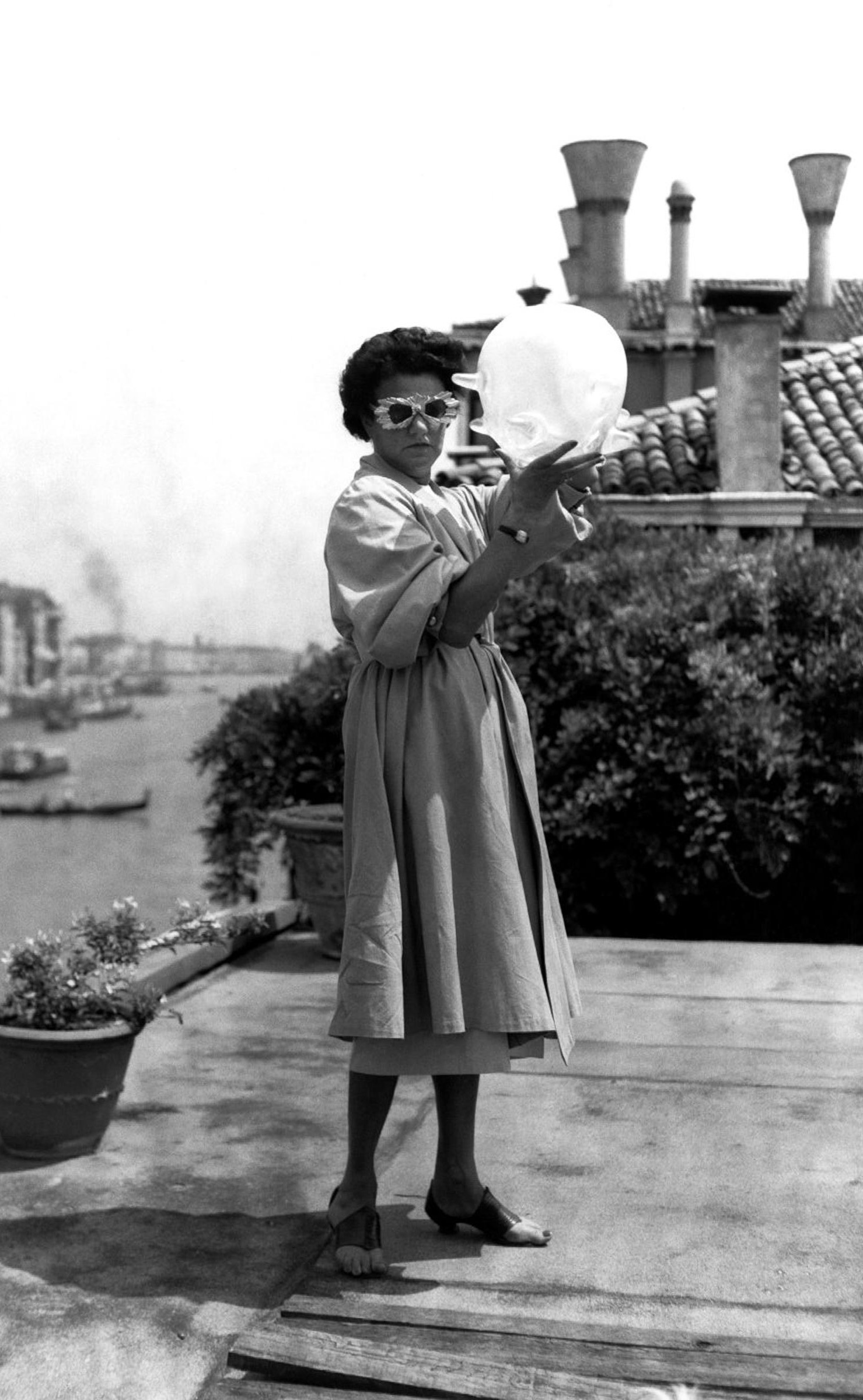
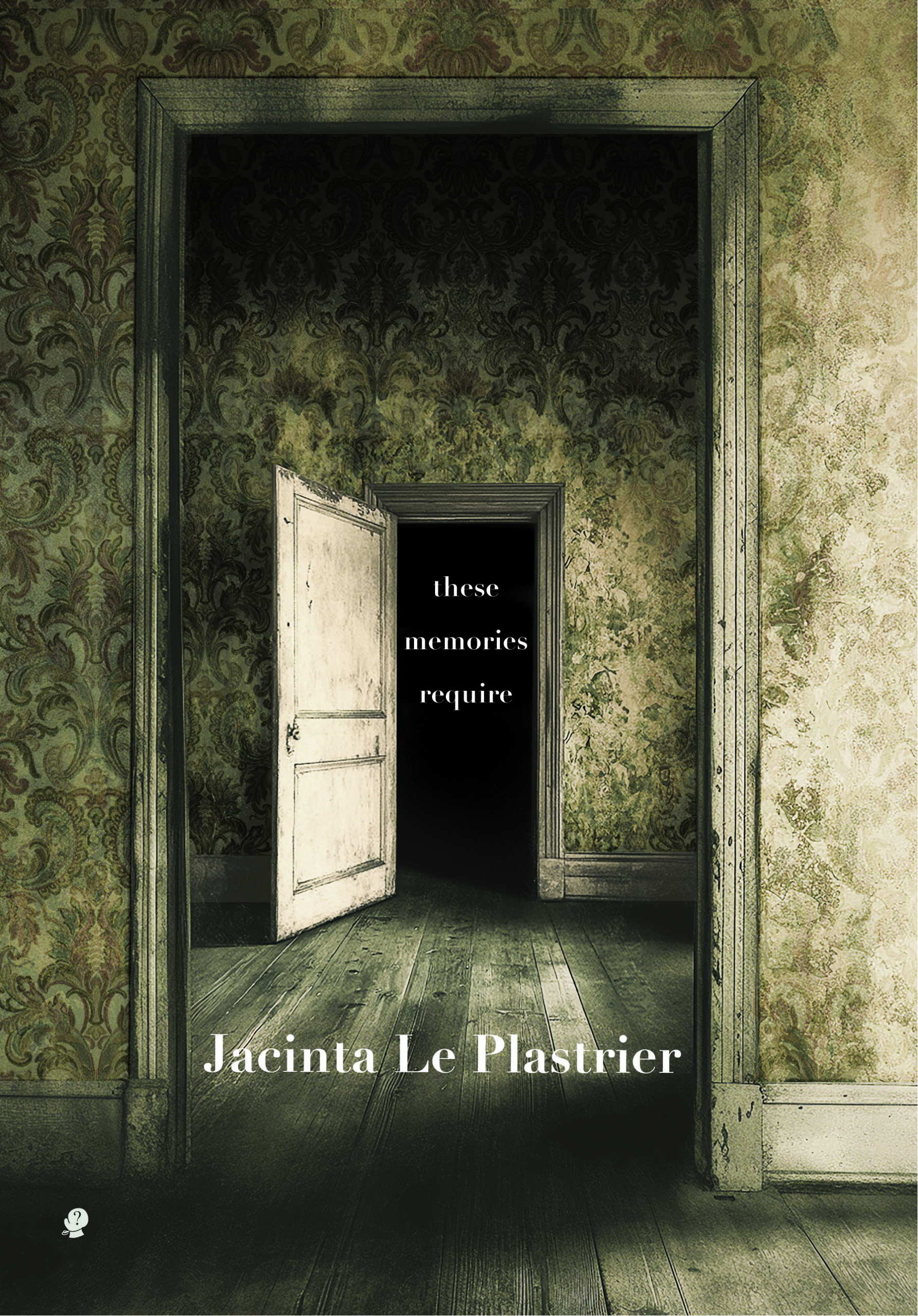
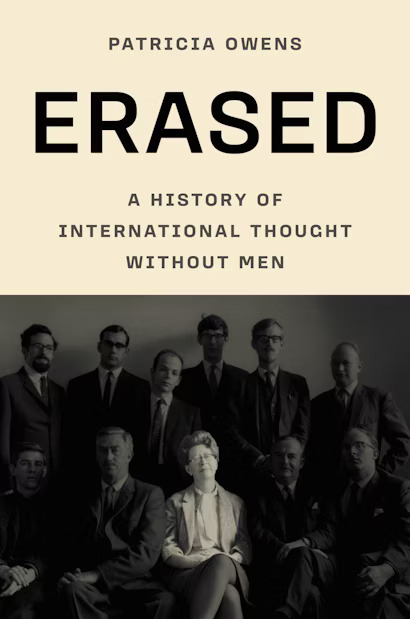
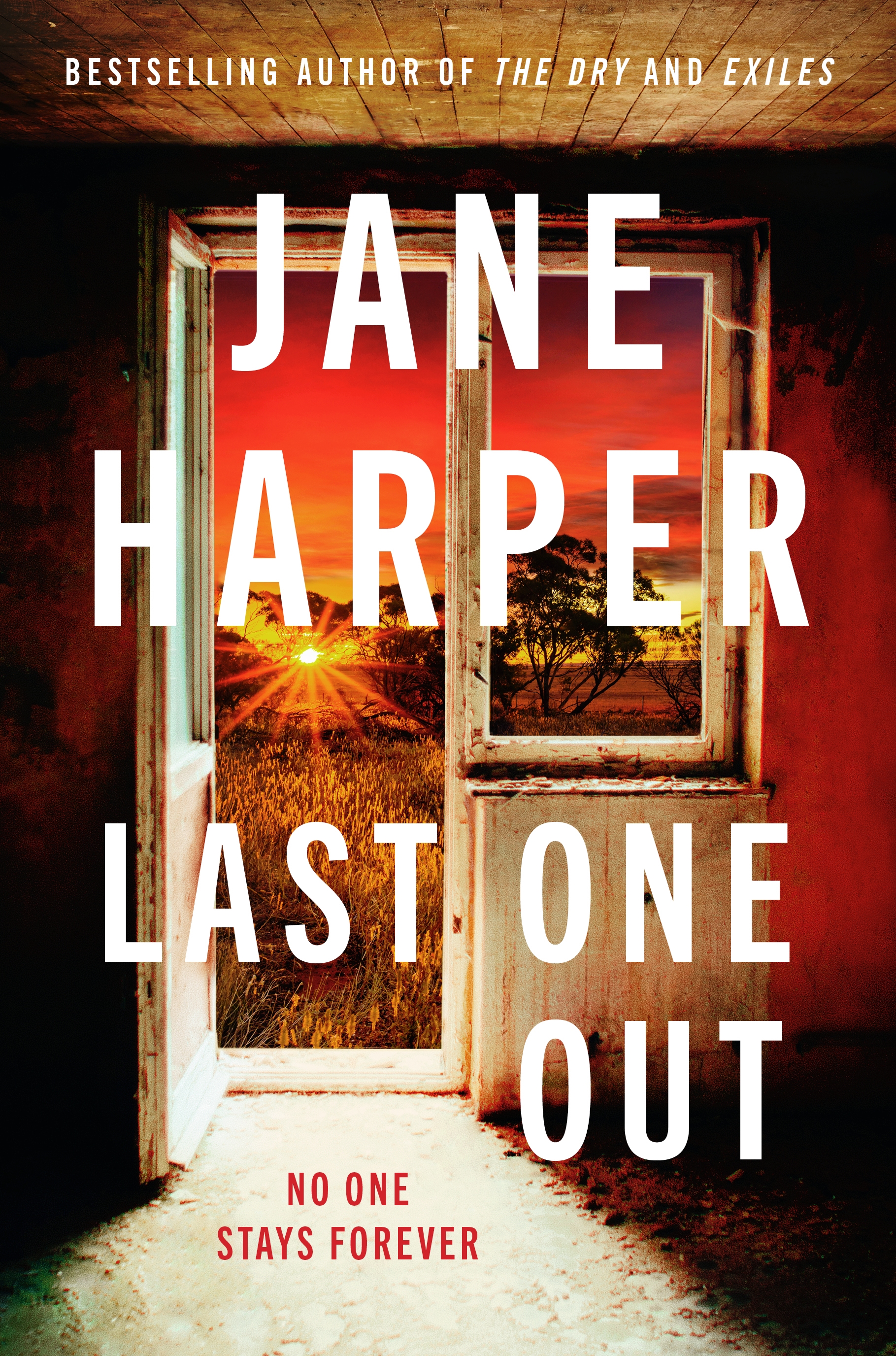

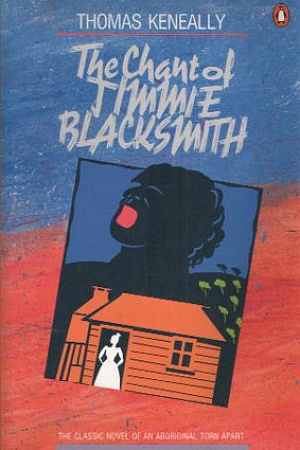

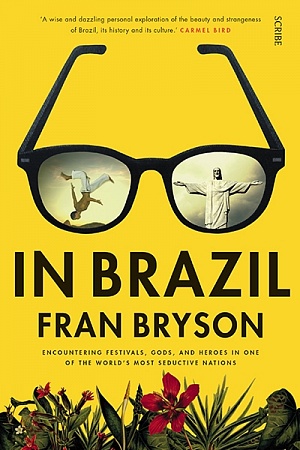
Comment (1)
Having read your excellent prize-winning essay with interest, I must confess that I am not quite sure to have correctly understood the title: “Staying with the trouble”. My best guess is that it means facing up to a difficult situation with courage, determination and perseverance.
I see that Donna Haraway, Professor and Chair of the History of Consciousness program at UC Santa Cruz, coined the term in a cultural anthropological article entitled: “Staying with the Trouble: Xenoecologies of Home for Companions in the Contested Zones”. Speaking of training dogs she explains that the dogs “taught us to stay with the trouble because they deserved no less; they made an ethical semiotic material claim on us rooted in their capacity for response—response-ability—in what I sometimes call ‘the open’, where what is to come is not yet—is not fixed by teleology or function, whether malignant or benign—and might still be otherwise”.
The common thread of your article, of course, is walking. Walking with a small group of fellow Australians, for pleasure, in the streets of New York and along the Inca Trail in Peru. Your walking and others’ walking: that of a musician, a female adventurer, artists, writers, intellectuals … While there is nothing in my personal experience I can equate this to, your narrative is a poignant reminder of the current refugee drama :
According to the UN, 59.5 million persons (nearly three times the population of Australia) have been forcibly displaced worldwide, in recent years, as a result of persecution, conflict, generalized violence, or human rights violations, and the movement is increasing. Children below 18 years of age constitute 51 per cent of the refugees.
Some risk their lives on boats but most of them walk, carrying babies and toddlers and what little else they are able to take with them.
It is the largest migration of human beings around the globe since primeval man began moving out of Africa 100,000 years ago, on foot. According to the anthropologists, that seminal migratory movement was prompted by climate change and the need to find new pastures and better living conditions. They moved slowly. For our aboriginal compatriots it took countless generations about 40,000 years to arrive in Australia.
It is a cruel reminder that walking is not just a cultural, touristic or sporting activity. It is primarily a means of survival – in every sense of the word – including for the large majority of those who lead essentially sedentary lives.
Also, allow me to add that your celebration of “randomness” resonates with what I consider to be the most plausible explanation of the genesis of life. This was provided by the ancient Greek philosopher, Democritus (460 BC – 370 BC) who is reported to have observed that “Everything in the universe is the fruit of chance and necessity”. Jacques Monod, the French biologist, a 1965 Nobel Prize winner, later accredited and developed that theory in his book “Le hasard et la nécessité” (Chance and Necessity) published in 1970. From this it is deduced that “Life is a spontaneous, evolutive, sensitive and reproductive process triggered by the fortuitous encounter of complementary elements of matter and energy in a favourable environment”. Chance in this context should be understood as meaning a “random variable” and necessity an “inevitable” event.
Leave a comment
If you are an ABR subscriber, you will need to sign in to post a comment.
If you have forgotten your sign in details, or if you receive an error message when trying to submit your comment, please email your comment (and the name of the article to which it relates) to ABR Comments. We will review your comment and, subject to approval, we will post it under your name.
Please note that all comments must be approved by ABR and comply with our Terms & Conditions.